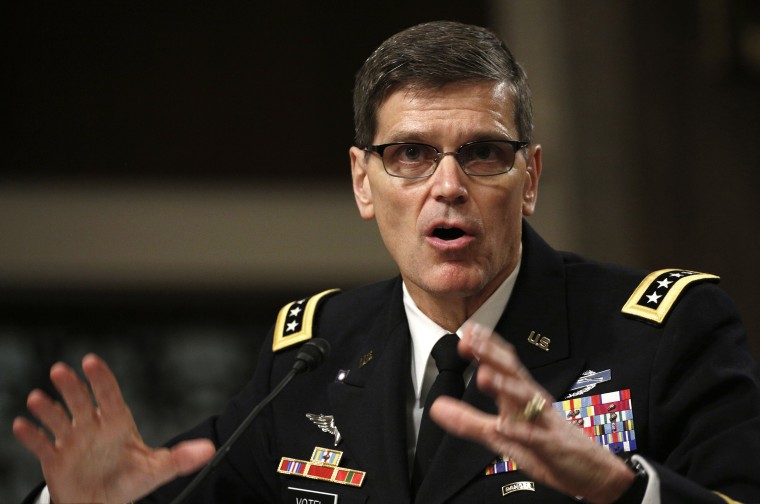WASHINGTON — The top U.S. commander for the Middle East said Tuesday that additional troops will arrive in Afghanistan in a matter of days or weeks following President Donald Trump’s decision to boost the American military effort in that country.
Gen. Joseph Votel, who is in Saudi Arabia, told reporters there that the new deployments will happen "pretty quickly," the Associated Press reported.
"What’s most important for us now is to get some capabilities in to have an impact on the current fighting season," said Votel, who visited Afghanistan last weekend.
Various reports have put the number of possible additional U.S. forces as high as 4,000, but subject to change depending on various conditions.
In a primetime speech Monday, Trump said the U.S. would take a new approach to the nation’s longest war but provided few details of what that would entail and he did not mention additional troops or reveal any specific plans.
"We are not nation-building again," Trump said in a prime-time address from Ft. Myer in Arlington, Virginia. "We are killing terrorists."
In the U.S., Secretary of State Rex Tillerson told reporters Trump's new strategy "has empowered our military commanders on the ground to make more timely decisions," and can roll back the gains made by the Taliban in recent years, but he would not comment on the number of additional troops heading to the country.
There are currently 8,400 U.S. service members in Afghanistan, serving dual roles both training Afghan forces and carrying out counterterrorism operations against al Qaeda and ISIS.
"We believe we can turn the tide of what has been a losing battle over the last year-and-a-half or so," Tillerson said Tuesday, "and at least stabilize the situation and hopefully start to seeing some battlefield victories on behalf of the Afghan forces."
Trump acknowledged that he had in recent years supported withdrawing American forces from Afghanistan, but added in his address Monday night that "all my life I've heard that decisions are much different when you sit behind the desk in the Oval Office."
The 16-year-war, the longest in U.S. history, has now vexed three presidents and cost more than 2,400 American lives. President George W. Bush first announced strikes against the Taliban on October 7, 2001, less than one month after the Sept. 11, 2001 attacks. The U.S. went in swiftly and with the help of more than 100 other nations, but after initial success it became clear sustainable victory would be a long-term proposition.
President Barack Obama, who similar to Trump ran a presidential campaign critical of U.S. military intervention in the Middle East, announced a troop surge in December of 2009 that eventually put more nearly 100,000 soldiers on the ground.
Troop levels fell dramatically toward the end of Obama’s time in office as part of his goal to wind down the war, and the official combat mission there ended in 2014. But a Taliban resurgence, along with the growing threat of ISIS, was enough to convince the U.S. and Afghanistan governments to reach an agreement that would keep American troops in the country.

